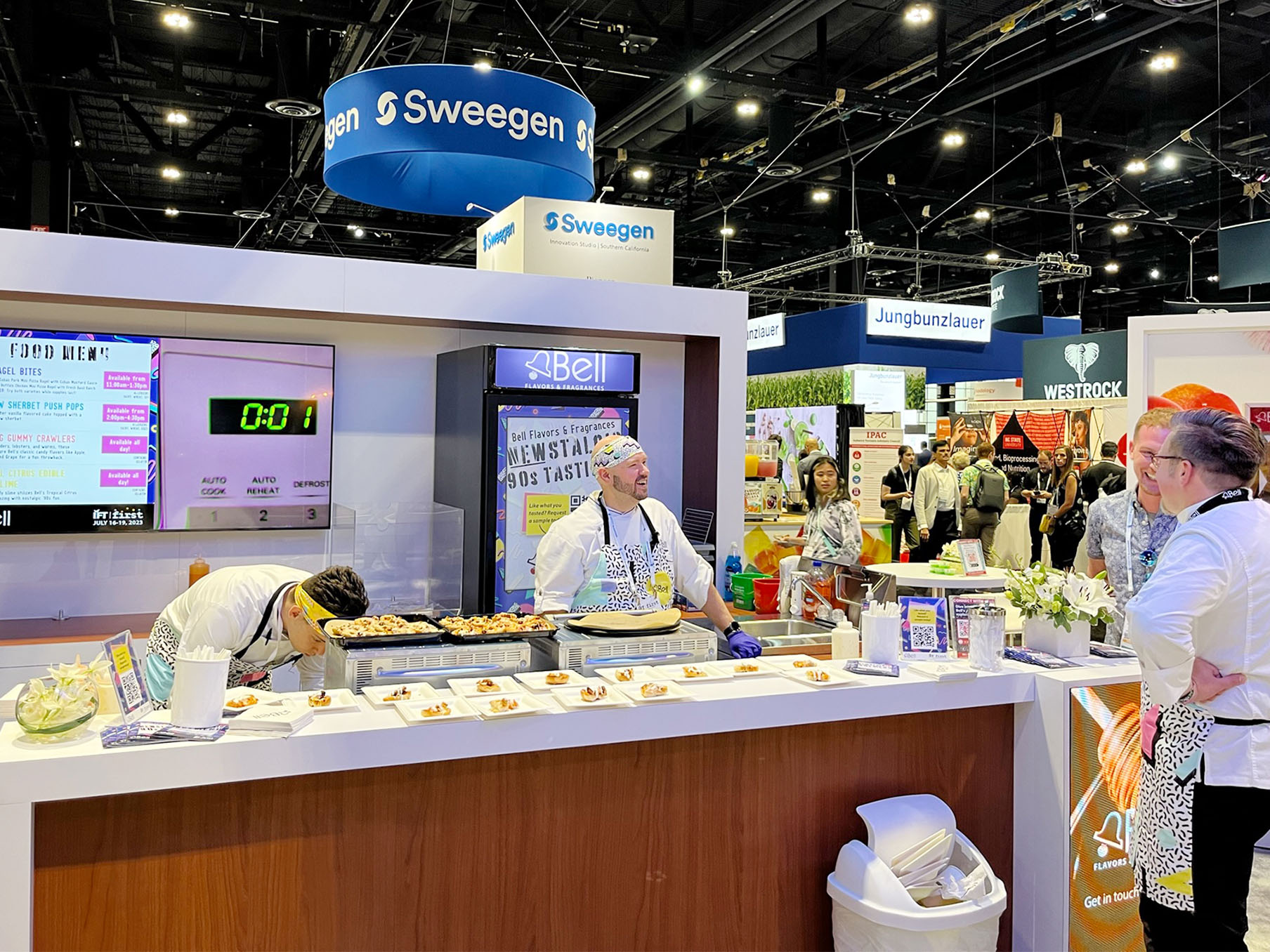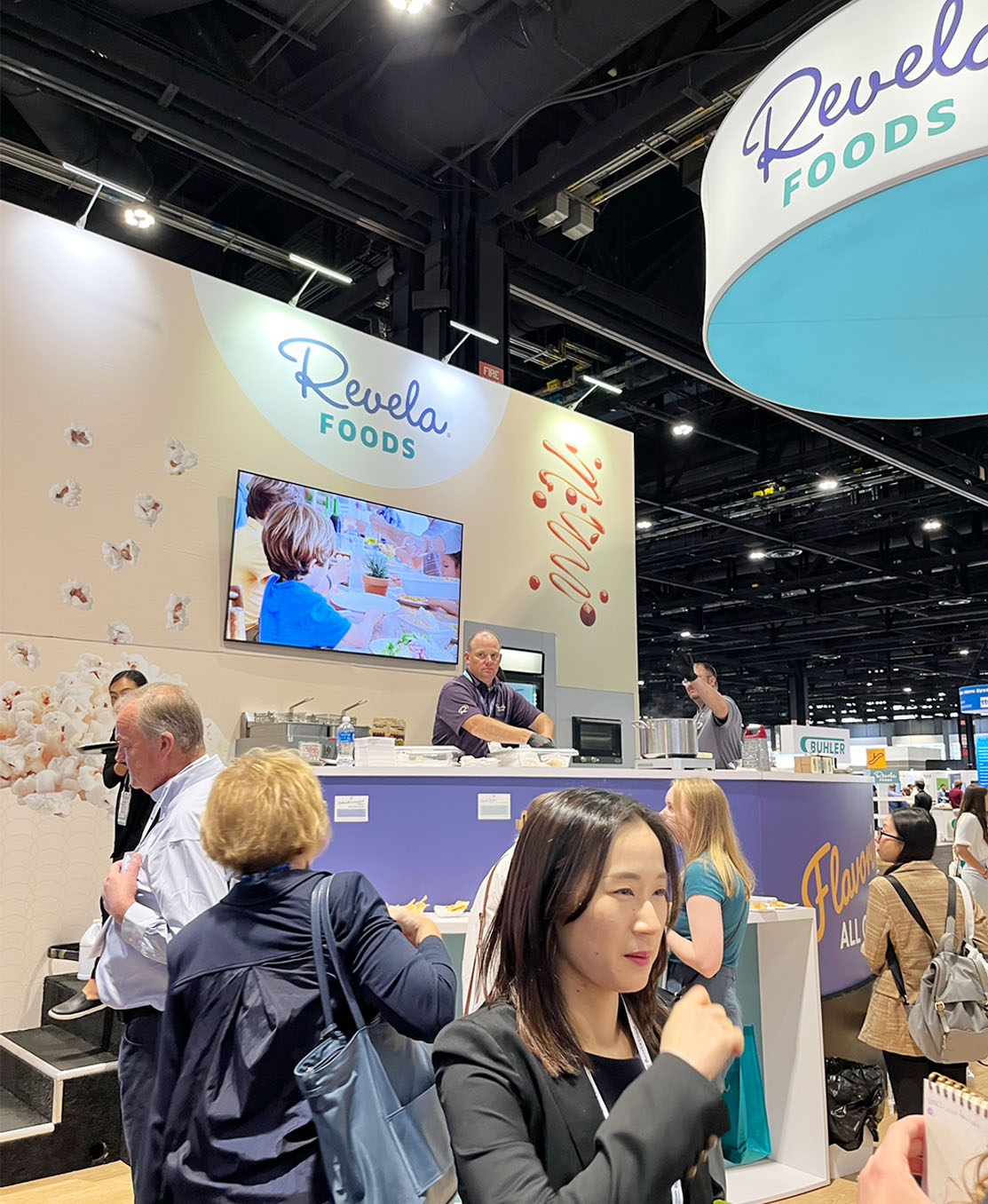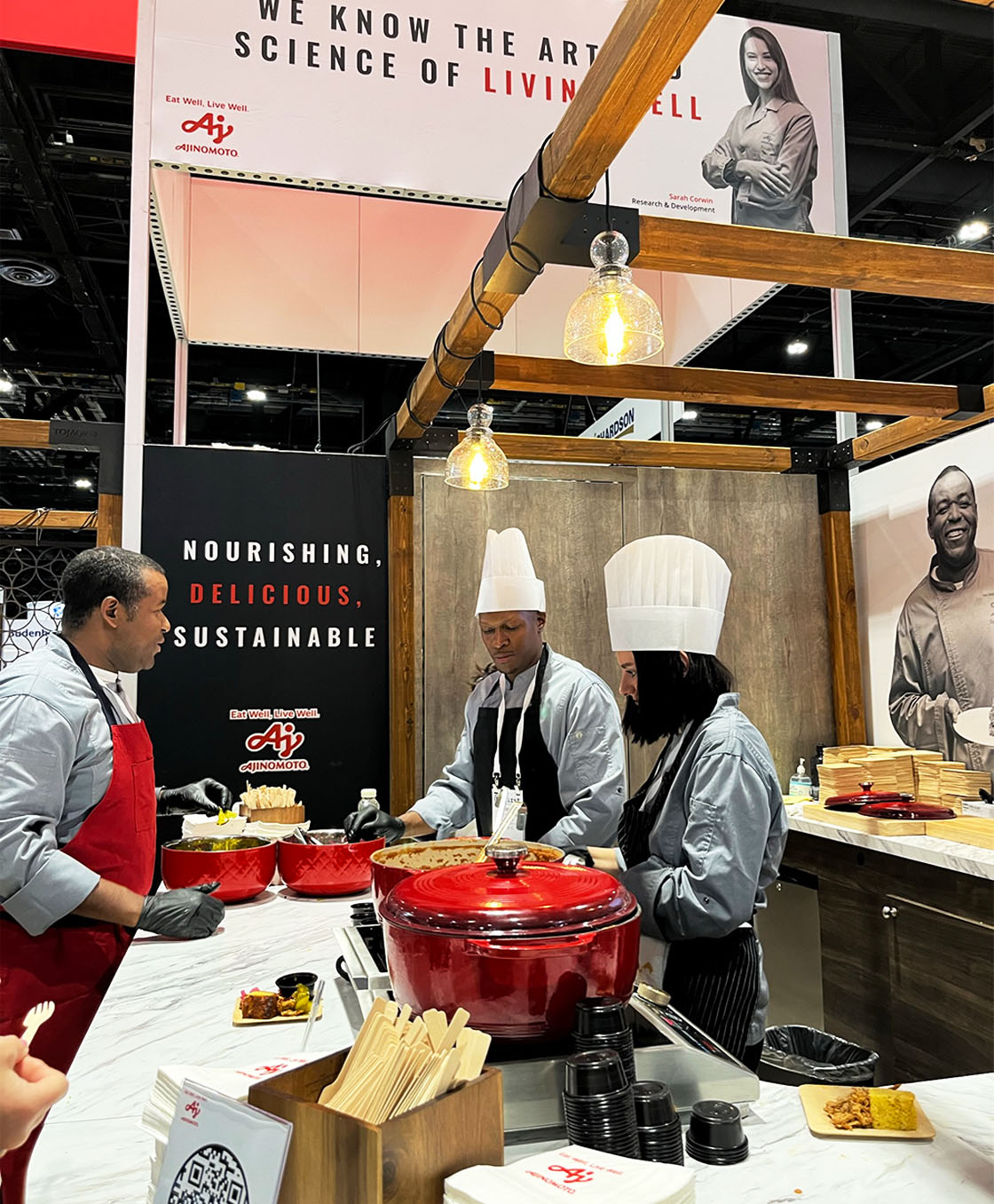Accomplishing more with less. That was the beating heart of this year’s Institute of Food Technologists (IFT) conference held at McCormick Place in the heart of Chicago. From drinkable yogurt to sweet sugar swaps to fiber and protein boosts, there was a smorgasbord of innovative ingredients pushing the boundaries of what we thought possible.
To discuss all that and more, Marcy Tessmann, CEO and President of C.O.nxt, and Rochelle Ripp Schnadt, Senior PR Supervisor, hit the tradeshow floor to scout out new trends and report back on this month’s State of the Plate podcast.
The five most enticing items on their plate included:

The pipeline for plant-based products remains strong.
We know that Americans love protein but what sparked our curiosity was the fortification of protein to proteins! We saw quite a few functional beverages that promoted the addition of protein, fiber, prebiotics and even post-biotics, which aid in digestion. Brett Reeder, Nutrition Sales Manager at Leprino Foods shared a drinkable yogurt and reminded us of the importance of phospholipids for brain development in infants by sharing studies that show effective brain support as we age.

Want to get smarter about overall health?
Developments for brain food continue in the nootropics, or “smart supplement,” category to support and improve cognitive function and increased focus. The product Cognizin® was mentioned as an ingredient and we saw how partnerships are formed for product developers and distributors to get key ingredients into the hands of those on the hunt for new solutions and better price points. Kyowa, the company that developed Cognizin, shares that your brain consumes 20% of your body’s energy when at rest. This means our brains need a whole lot of nutrition to stay alert and focused throughout the day.

Increased fiber for a healthy microbiome!
Colleen Zammer, Vice President of Growth and Innovation at Bay State Milling in Massachusetts, shared that they are introducing a new variety of wheat to North American markets. Their recent innovation in High Amylose Wheat Flour (HAW) called HealthSense®, a non-GMO flour, contains more than 30% prebiotic fiber – that is 10x more fiber than traditional white flour. It resists digestion until it gets into your lower intestine then it feeds the healthy gut bacteria, keeping your blood sugar stable, promoting immune support and supporting the gut-brain axis. By simply improving this one staple ingredient in the diets of a community, or a country, it can positively impact the health and wellness of its consumers. Remember to make 50% of your grains whole grains, for fiber!

Reduced sugar and sugar swaps remain a focus for health benefits.
Taking their place are products like monk fruit, allulose and stevia. Chef Dylan Morton from Foodology by Univar even spoke about blends of sweet ingredients that give the right bite and an enjoyable eating experience. If you imagine a bell curve, one ingredient may peak early in your bite and leave a bitter aftertaste so another ingredient may be layered in to finish off the flavor just right. He and Chef Mike Haracz spoke to the use of social media as food scientists and chefs, reminding us that a good source citation is important before believing everything that may incite fear in food that appears on the internet and social media.

The need for continued connection on sustainability to support food and ingredient claims.
Additional work is needed to connect the dots on the importance of sustainability and how the company defines and brings their version of sustainability to the marketplace. Marcy and Rochelle noted a lot of substitutes for animal products as the interpretation to “sustainability.” While there is certainly room for everyone at the table, it was a good reminder that agriculture needs to continue promoting the sustainability practices farms are implementing and sharing that sustainability story throughout the value chain, all the way to the end consumer. We’re fortunate to have a front-row seat to the entire food chain with our roster of clients and industry partners, and love to help brands develop a sustainability platform to share their unique perspective and shared values with their audiences. Wearing our farmer hats at IFT, we felt that the further downstream you get from the farm and farm practices, the more the definition of sustainability deviated from the original intent. But with education and communication – both internal and external – a cohesive and unified understanding of a brand’s sustainability point of view can be achieved. And vice versa: Wearing our ingredient manufacturing hats, there are many demands and problems food technologists are aiming to solve to do more with less or help drive down ingredient costs for their customers. Much work remains to be done in this space and it excites us to think about the opportunities to make connections and build relationships that bridge that gap. Who are you trying to speak to? And how do they define sustainability? Let’s uncover the answer together.
C.O.nxt Insight.
Our team of subject matter experts focuses on food and agriculture—farm field to processing to entrée on a plate. We can help you build a new brand, protect an old one or target customers to foster sales. Let’s talk when the time is right to handle your next strategic marketing and communications challenge: Marcy Tessmann, marcy@co-nxt.com.
SHARE THIS STORY
C.O.nxt Promotes Two Employee-Owners to Account Supervisors
HARTLAND, Wis. (April 15, 2024)—C.O.nxt, 100% employee-owned communications agency, announces two recent promotions on their team of employee-owners. Brandon Maly and Cheryl DeShambo have both been promoted to the role of account supervisor. Brandon Maly









